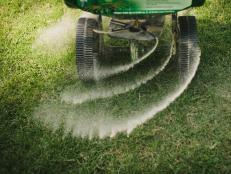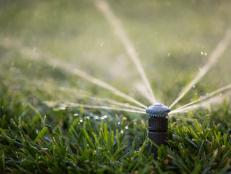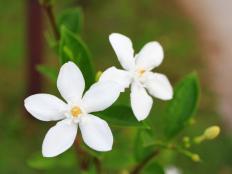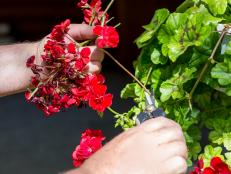Saving Citrus From Frost


Thinking of saving a little money and improving your health by growing your own backyard lemons and oranges? Or just love the fun plants for whatever you can get off them? If you live where temperatures can drop below the mid-20s in the winter, think again, because the fruits, which usually ripen in late fall or winter, are extremely sensitive to frost and freeze damage.
Before I get into what you can try to do to protect your garden’s citrus investment, let’s break it down as simply as possible: when a “blue norther” polar vortex comes along, suddenly dropping temperatures from relatively mild to the teens, there is very little, if anything, we can do to protect nearly-ripe citrus fruit from freezing. At best, we can pick some fruits ahead of time, then try to keep the trees alive so they can hopefully fruit another year.
Okay. That said, here are some straws you can grasp, based on experience and serious studies from everywhere citrus is grown both commercially and at home – even in chilly Japan, where citrus trees grow wild.
Fruits Are Super-Vunerable
Because the fruits themselves are mostly balls of orange sugar water, protecting them during hard freezes is very difficult; the juice turns to ice easily, and spoils quickly whether or not the skins are ruptured as well. It takes temperatures in the mid-20s only a few hours to freeze the fruit beyond salvage. By the way, I have seen kumquats and satusmas, both small-fruited citrus, tolerate light freezes much better than larger lemons, oranges and grapefruit.
Covering trees, stringing incandescent lights underneath, and regular misting can help to a certain degree (pardon the pun), but not for long, and efforts are best aimed towards saving the trees themselves. For fruit, your best bet is to simply pick what you can before it gets damaged. Anyone telling you much more than this, is dreaming. Sorry.
Protect Trees
Whether or not you can salvage a few precious fruits, the more important task is to save your trees so they can live to fruit down the road.
First of all, understand that some types of citrus trees are much more cold-hardy than others. Lemon and orange trees are the most susceptible to cold damage, but smaller species are often able to withstand very low temperatures for much longer. I have a backyard fruit-growing friend in central Mississippi (USDA Hardiness Zone 8b, well north of where growing citrus outdoors is recommended) who has had satsuma, mandarin and other closely-related types of tangerine trees and their hybrids survive below 15 degrees F; his kumquat trees can tolerate even colder temperatures.
In general, larger, mature trees can withstand and recover from cold injury better than young trees, and those that are kept in good condition tend to fend off damage better as well. It is important to fertilize citrus trees, but not too much and not in the late summer, which can keep trees too tender going into the cooler weather. And trees which are allowed to get too dry can be more susceptible to cold injury later.
In fact, watering the ground underneath citrus trees a day or two before predicted cold weather can help quite a bit,as moist soil radiates more ground warmth than dry soil. Most commercial citrus growers remove all weeds, grass, and mulch underneath their trees, then water deeply so the sun can warm the moist soil better in the winter.
Also keep in mind that citrus trees that are gradually exposed to cooler temperatures “harden” against cold damage, but this can be lost quickly during just two or three weeks of warm weather. Sometimes citrus trees will start growing or even flowering during mid-winter mild spells.
Wrap and Cover
Protect young trees by wrapping their trunks with burlap, blankets or cardboard, but inspect regularly for ant or other insect infestation. For young or small trees, the most effective method of cold protection is to bank clean soil up on trunks a foot or two high; this is a surprisingly good insulator.Bank your trees before there is a chance of frost and remove the bank in the spring.
The next step—often, the first one we reach for—is using temporary covers for entire small trees, which can somewhat protect against cold wind and retain heat radiated from the soil underneath the trees. For the most benefit, you really need to drape the covering all the way to the ground, to help gather and retain heat soil warmth and maintain a more humid atmosphere.
However, simply throwing a blanket or some plastic over trees won’t help much if it gets really cold, or stays cold for more than two or three days.
Some gardeners protect individual trees by setting up frames that can be quickly covered, and then uncovered with the sun comes out or the temperatures rise. If you use plastic to cover a tree, some sort of venting is necessary on sunny days to prevent overheating—even if the temperature under the drape does not warm up enough to steam the plant, it may cause the plant to break dormancy, begin actively growing, and become more susceptible to frost damage. However, there are several decent “frost cloths” available that may be left on for extended periods without risk of harming the plant.
Adding heat-generating incandescent light bulbs or draping strings of the big, old-fashioned Christmas lights underneath covers can raise temperatures a few degrees. Good luck finding regular incandescent bulbs, which are being phased out this year; look instead for larger, spotlight type bulbs. Note: Be sure your outdoor lighting is connected to an approved, safe outlet, lest you get a nasty shock in wet conditions!
The Myth of Misting
A lot of citrus growers run sprinklers on the ground and over trees when temperatures dip, but it’s important to understand that ice does not protect the tree—protection results from how water releases heat as it freezes and melts, allowing the encased plant tissue to remain around 32 degrees Fahrenheit. It works for trees during the continuous freezing of additional water that is being applied constantly. The most effective watering is through using mist nozzles which put out a finer spray than regular garden sprinklers, using very little water.
It is important to start this treatment well before it gets down to freezing, and then continuously until the temperature rises above freezing, or at least until ice in the shade outside the orchard begins to melt. And even then, it helps just when the temperature dips into the upper 20s—not much at all once a really hard freeze sets in.
So watering—really, continual misting—is not that practical, and is only good during fairly mild freezes. Back to dragging out strings of light bulbs and coverings.
Consider Containers
Some citrus can be enjoyed in containers for many years, and are easy to bring in during cold weather. An old friend of mine from North Carolina has kept a dwarf orange tree in a big pot since 1967, dragging it indoors every fall, and it flowers and fruits every year in his living room.
This is a home-scale version of how Emperor Louis XIV of France had large moveable glass doors installed to close-up rooms built into a protected wall of his fabulous Versailles garden, to have his container-grown citrus brought in during winter snaps.
Summary
Keep trees healthy with watering in dry spells and light fertilizing in the spring. When a freeze is predicted, harvest as much fruit as you can, then clear the soil underneath your trees to allow the earth to absorb sunlight. Several days prior to an expected freeze, water deeply underneath the tree and surrounding area.
For extra protection, wrap trunks and consider banking soil up on trunks of small trees. Drape lightweight material over entire trees, making sure it goes all the way to the ground and is vented on sunny or milder days. Add incandescent lights for extra warmth.
A final option is sprinkling your trees with water right before and continuously during mild freezes.
Otherwise, count your lucky stars you are only dealing with “yard trees” instead of an entire commercial orchard with your livelihood depending on all this.
Better luck next year!













































